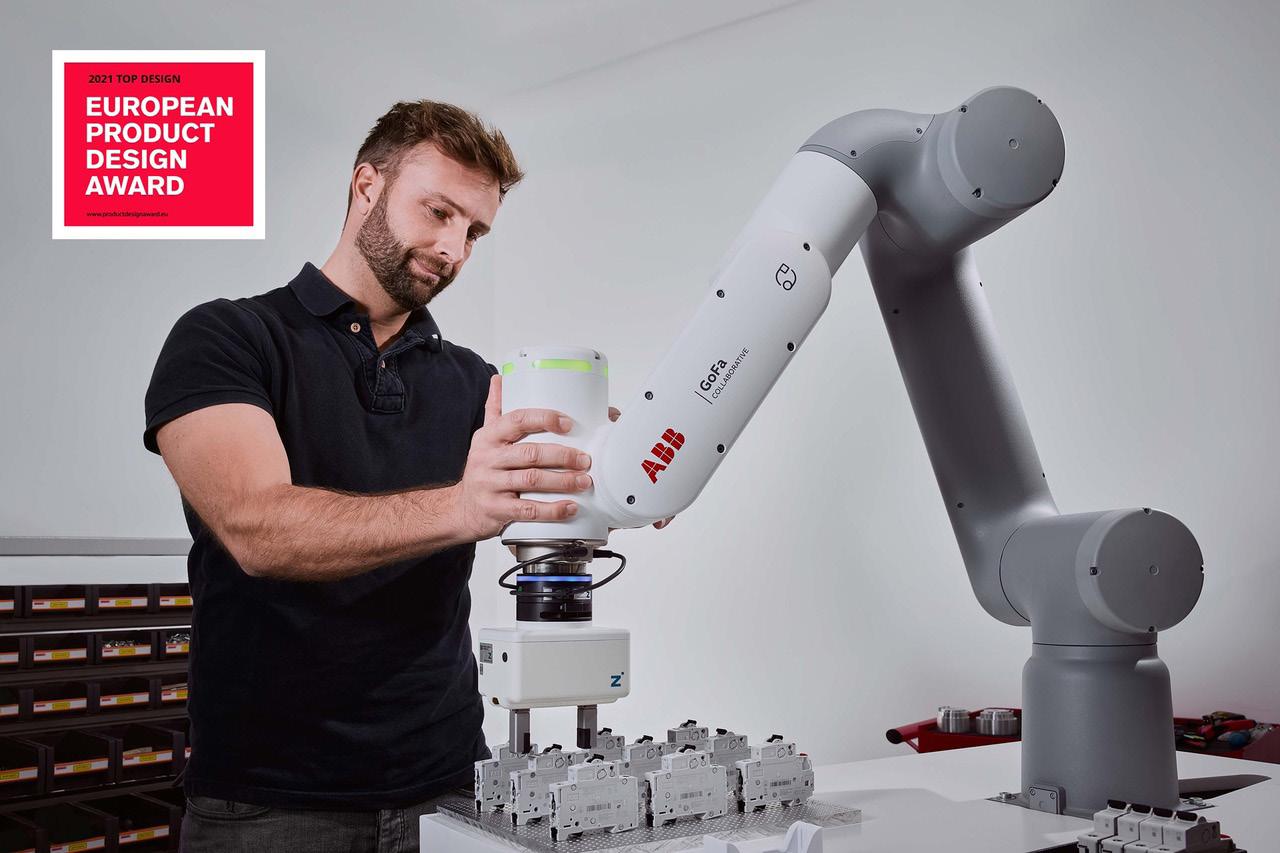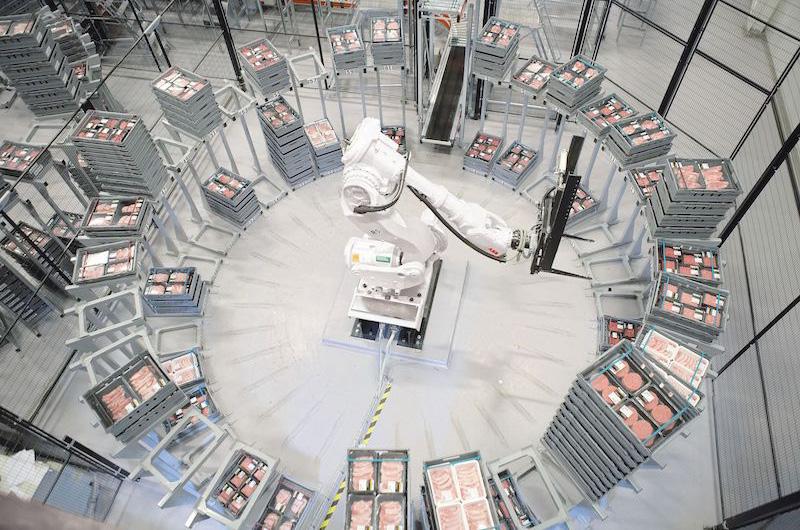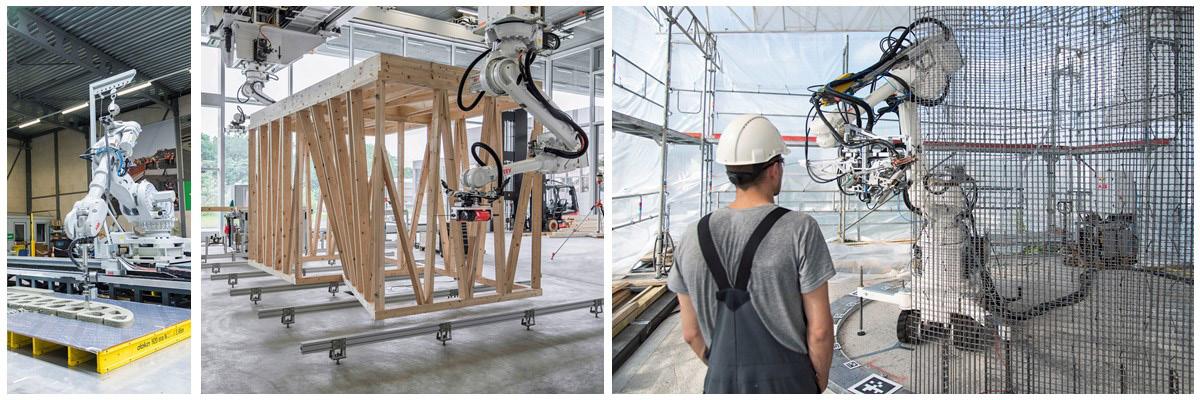
4 minute read
CAN SMART ROBOTS UPGRADE OUR COUNTRY’S CONSTRUCTION INDUSTRY?
(Above): The newest addition to ABB’s #collaborativerobots portfolio, #GoFa, continues to impress manufacturers with its intelligent, intuitive and easy-to-use design. GoFa won the "Top Design" award at the European Product Design Awards 2021. Designed with first-time users in mind, GoFa reflects ABB’s world-leading competence in industrial #robotics and combines it with the#safe aesthetics and familiarity of a consumer product.
INNOVATION
By Linda Eales, robotics division manager: ABB South Africa
Can robots help alleviate SA’s low-cost housing shortage and give the local construction industry the boost it needs to get back on the path to profitability? Judging by the growing number of successful robot-driven construction sites around the world, it is not too far-fetched.
There is a growing groundswell of support for investment in robotics in the construction industry. Around the world, we are already seeing the potential of robots in making the industry safer and more cost-effective, improving sustainability, enhancing quality and cutting waste.
In a global survey commissioned by ABB earlier this year of 1 900 large and small construction businesses in Europe, the USA and China (https://new.abb.com/news/ detail/78324/cstmr-sustainabilityfrom-the-ground-up), eight out of 10 respondents said they would introduce robots onto their sites within the next 10 years to help address key challenges in the industry, including skills and labour shortages, the need for more affordable and environmentally friendly housing and the ability to reduce the environmental impact of construction.
The fact is that robotic automation offers significant potential to enhance worker safety, productivity, efficiency and manufacturing flexibility throughout the South African construction industry. However, the country is lagging behind the rest of the world when it comes to robotics, with practically no robots in the local construction industry at this stage.
One of the areas where robotics can have a real impact is in the industry’s ability to meet the country’s massive demand for low-cost housing, through pre-manufacturing units with flexible options and designs. In pilot projects elsewhere in the world, robots are enabling the automated assembly of walls, floors and ceilings for multi-storey, multi-unit affordable housing and even producing prefabricated modular homes.
Canadian modular fabrication company Intelligent City has achieved a 10-15% saving on its total build cost using robots, with projected estimates of approximately 30% in longerterm savings. This has increased production efficiency by 15% and speed by 38%, while reducing waste by 30%.

Swedish building giant Skanska’s robot welding application has improved quality, employee productivity and safety by automating the fabrication of steel reinforcement baskets on site. This solution has also reduced the cost and environmental impact of transporting bulky finished reinforcement baskets to building sites.
One of the major challenges facing the industry at a global level is waste management, with the industry under pressure to dramatically improve its environmental footprint. According to the International Energy Agency, the industry accounts for 36% of global energy use and 39% of CO2 emissions, while buildings account for 40% of global energy use.
Together, this compels the industry to find ways of optimising the way it designs, constructs and manages buildings to reduce energy use. It is estimated that up to onequarter of material transported to a building site leaves as waste. In Europe, the industry is responsible for 34,7% of the continent’s waste. Using automation and digital solutions, builders can eliminate waste at the beginning of a project through effective building design and construction processes.
Another ongoing challenge is ensuring the health and safety of workers. Here, robots are already making construction safer by handling large and heavy loads, working in unsafe spaces and enabling new, safer methods of construction. Compared with building sites, controlled factory environments reduce the scope for accidents, with greater levels of protection against some of the most common sources of injuries in the construction sector such as falling from height, slips, trips and falls.

A third driver for automation in the construction industry is productivity. The automotive sector has fully embraced modern production technologies and, as a result, has improved productivity by 30% over the past few decades. Many of the techniques used in construction have not changed for generations. Construction companies need to reduce time on site because if they can construct the building faster, they get paid faster, with lower overall costs. Faster completion of projects also opens the way to handling more projects, with workforces able to be utilised more effectively.

In addition, robots offer the ability to develop new skills in the local construction industry by improving quality and productivity methods. There is a real opportunity to work with the country’s tertiary education institutions to develop new technologies, solutions and skills.
With so few construction businesses using automation today, there is massive potential to transform the industry through robotics – as ABB is doing by developing new solutions for key industry challenges and, in the process, addressing bigger socioeconomic issues.
ABB (ABBN: SIX Swiss Ex) is a leading global technology company which energises the transformation of society and industry to achieve a more productive, sustainable future. By connecting software to its electrification, robotics, automation and motion portfolio, the organisation pushes the boundaries of technology to drive performance to new levels. With a history of excellence stretching back more than 130 years, ABB’s success is driven by about 105 000 employees in over 100 countries. Website: www.abb.com/robotics










